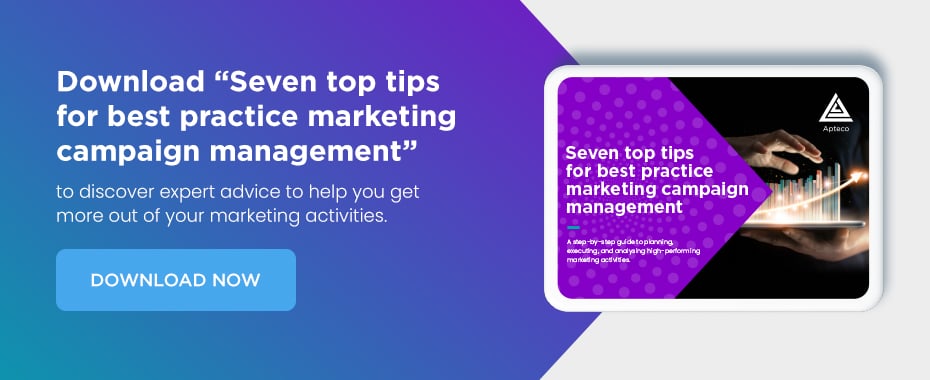6 things a marketer should know about their existing customers: Part 2
01 Dec 2020 | by Kristina Boschenriedter
Discover six key questions every marketer should ask, and how to get the answers.
The importance of existing customers
The focus in marketing is often on acquiring new customers. However, focusing on existing customers offers some decisive advantages.
For example, the support and loyalty of existing customers is associated with significantly lower financial costs than the acquisition of new ones. In addition, existing customers generate greater added value through higher quality shopping carts and more frequent purchases.
To build long-term loyalty from existing customers, it’s therefore crucial to understand their needs and preferences exactly. With the help of this knowledge, marketing activities for the acquisition of new customers can also be informed by addressing comparable, promising customer profiles.
We began looking at this topic in a previous blog post. In this first part we dealt with the basics, including aspects that help us to understand our customers such as: "Who are my top customers?", and "Where do my customers live?".
In this part we go one step further and delve a little deeper into customer behaviour analysis.
Let’s take a look at 6 key approaches.
1. Which channels do my customers buy through?
Companies have a variety of channels available for both communicating with their customers and selling their products. You can, for example, buy in a branch, from an authorised dealer, or in an online shop.
In an online shop in particular, it’s crucial to know what incentive motivated the customer to make the purchase. Was it the monthly newsletter, or an ad on a social network? With this knowledge, resources can be assigned to the right channels and used profitably. A response analysis can be used to find out which channels customers used to make their purchases.

2. What percentage of my customers have high, medium and low customer lifetime value?
Customer Lifetime Value (CLV) describes the average value that a customer has for a specific company over the course of their entire relationship. With the knowledge of which customer has which CLV, you can now divide your customers into categories.
A common method for this is an ABC analysis, in which customers are divided into three categories (A, B, C). The A customers have a high CLV and are considered to be very important. The B customers have a medium CLV and the C customers a low CLV, and are typically treated with less importance respectively.
This classification helps you to use appropriate marketing measures where they promise the greatest impact. For example, A customers can be offered better delivery conditions or discounts.

3. What share of sales do X% of my customers generate?
What proportion of my turnover is generated by what proportion of my customers?
This question can be answered using the Pareto analysis. Similar to the ABC analysis, this is a way to classify customers for the optimal planning of marketing activities.
For this calculation, the total annual turnover is divided into 10 groups of equal size and then assigned to the number of customers who generated them. You will typically find that a very small proportion of customers generate a very large proportion of sales. The Pareto principle originally said that 80% of the results are achieved with 20% of the total effort. In our case, this would mean that 20% of customers generate 80% of sales.

4. How many campaigns are successful?
Measuring the success of individual campaigns is crucial in order to optimise marketing communications. However, the first question that arises is how success is actually defined. For example, what is the desired customer interaction from the marketing message?
The optimum outcome is usually a conversion – the conclusion of a transaction. On the way there, however, a wide variety of other goals can be defined, such as registering for a newsletter, downloading an app, or simply opening or clicking the newsletter.
It makes sense to measure different goals and how they have been achieved, as this allows you to determine at which point in the customer journey customers are lost.

5. How do my customers move within the marketing segments over time?
Over time, customer buying behaviour can change. Frequent customers may not stay that way forever. To recognise behavioural changes at an early stage, it’s worthwhile to track segment migrations.
Select a time window, for example two years, which in turn is divided into smaller time periods, such as quarters. A segment can in turn be defined differently. For example, customers with a high purchase frequency and high turnover can be compared against customers with a high purchase frequency and low turnover. Then the number of people per segment and time period is calculated.

6. Which channels / touchpoints do my customers use along their customer journey?
In addition to wandering through the segments, the customer journey can also be viewed via the channels and touchpoints used. With the knowledge of which touchpoints the customer interacted with, for example prior to a transaction, the most valuable touchpoint hikes can be identified. This enables marketers to create corresponding incentives for customers who are not yet at this point in the customer journey.

Do you want to better manage your end-to-end campaign processes?
Download “Seven top tips for best practice marketing campaign management” to discover expert advice to help you get more out of your marketing activities.


